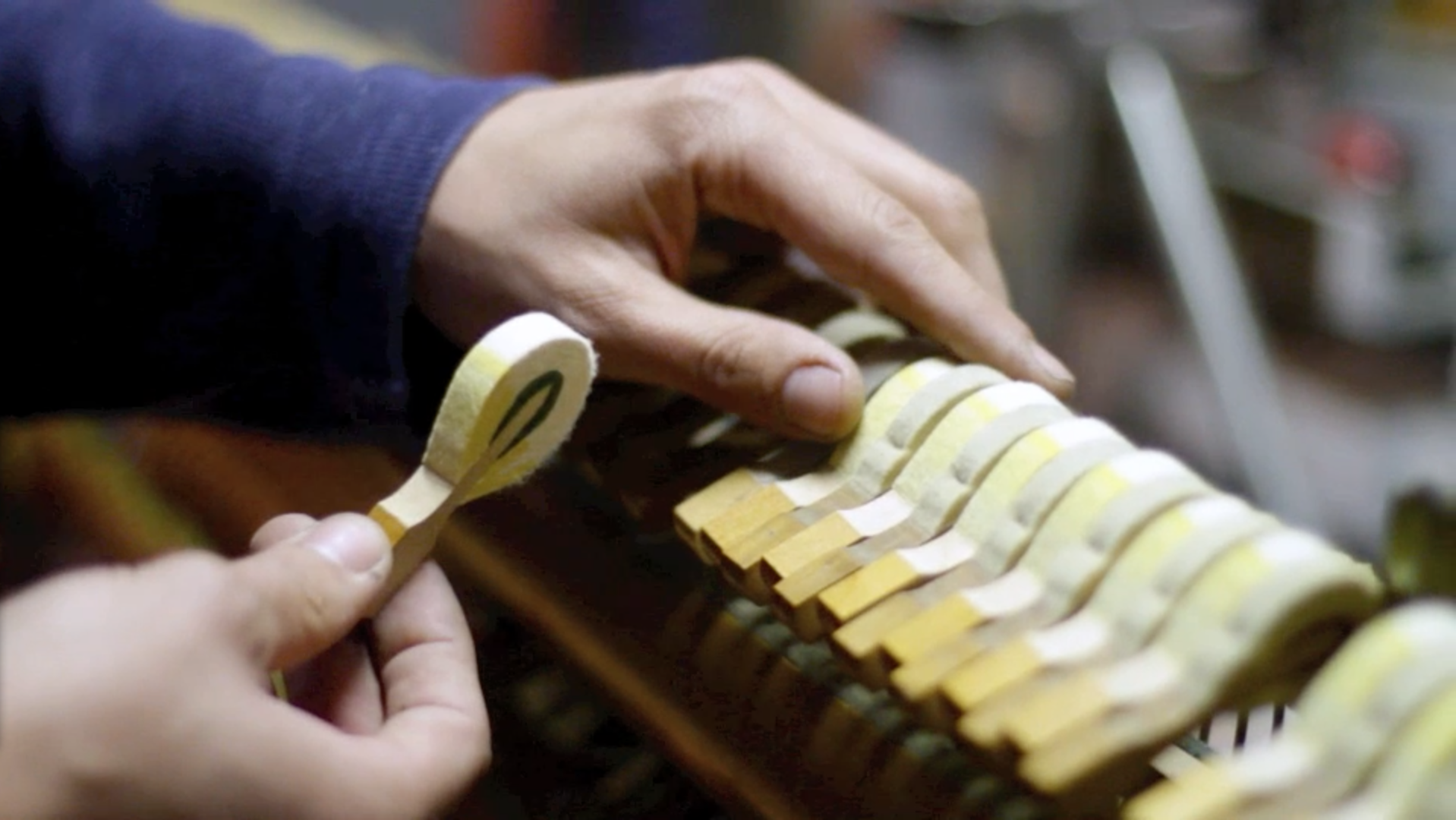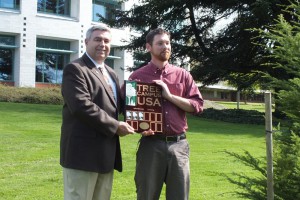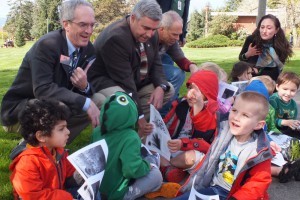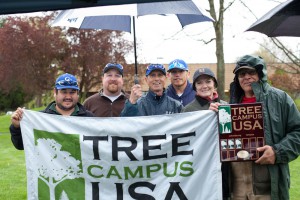Exceptional Faculty Award spotlight: The technophile with human feeling
Chris Martin has gathered the students from his Web Video Production class in the hallway outside their classroom to demonstrate how to set up an interview shot. One student—a burly guy with a baseball cap and gray beard—has affably agreed to stand in front of the camera as the “interviewee.”
“Now let’s think about camera height, because you can change things a lot depending on the angle you shoot your subject at,” Martin says, adjusting the camera’s tripod. “Do we want to set it lower and look up at him to give him that godlike angle? Because we all know Steve has a bit of a god complex—just kidding! Just kidding!”
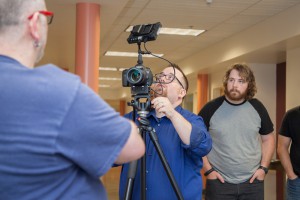 The whole class, Steve included, cracks up, and then Martin continues, raising the tripod as he speaks. “You can do stuff like that,” he says. “You can look down on them, too. But typically, we want to meet the subject at their own level, to give them that human feeling.”
The whole class, Steve included, cracks up, and then Martin continues, raising the tripod as he speaks. “You can do stuff like that,” he says. “You can look down on them, too. But typically, we want to meet the subject at their own level, to give them that human feeling.”
In many ways, that last line is an apt summation of Martin’s teaching philosophy—and the secret to his popularity with students, who nominated him in droves for Clark’s prestigious 2013-14 Exceptional Faculty Award.
“His patience and approach in bringing out the abilities in all his students, from the novice to the advanced, encourages respect for all,” wrote one nominator. “His emotional integrity allows him to act as a mentor and to also mirror the importance to students that he is also learning the ever-changing aspects of technology.”
“If you don’t care about who your students are or where they come from or what they actually know—and they know a lot—then you can’t help them,” says Martin, who teaches both Computer Technology and Computer Graphics Technology classes as an adjunct at Clark, as well as general business courses at Warner Pacific College. “What I like about teaching at Clark is you really get to know the students. When they go through hard times, you know about it.”
Martin also gets strong praise for his real-life experience as a web designer and videographer. He has spent more than eight years running his own multimedia studio, creating videos and web content for businesses, nonprofits, and artists. He also produces a regular online documentary video series called Innovators of Vancouver that showcases leaders in Southwest Washington.
Martin, who holds a bachelor’s degree in Media Arts and Animation from the Art Institute of Portland and a master’s degree in Management and Organizational Leadership from Warner Pacific, regularly shares stories from his professional career to illustrate class material. A self-described “big experimenter,” he often tries out new tools and methods in his teaching—including Twitter, which Martin has used to create online discussions about class material among his students.
“It’s just a way of being accessible,” Martins says. “I think it helps students feel connected to me a little more.”
Or, to put it another way: It’s Martin’s way of giving his students that “human feeling” in the digital age.
Learn more about the other 2013-14 Exceptional Faculty Award recipients.
Photos: Clark College/Jenny Shadley

